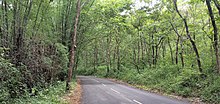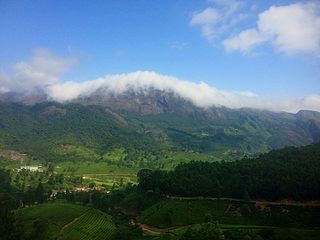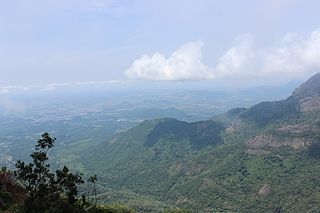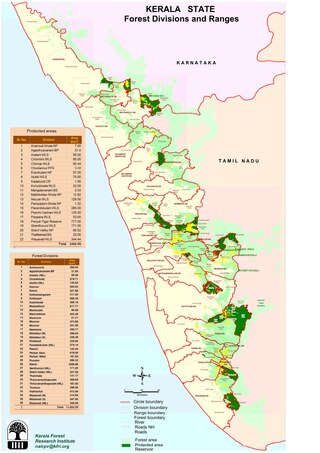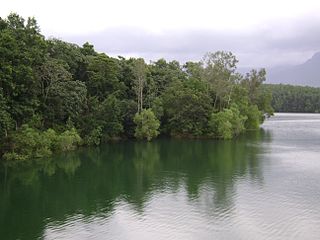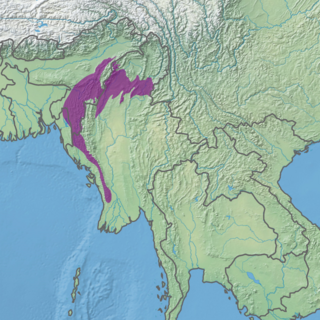|
| Little cormorant (Phalocrocorax Niger) | Greyfronted green pigeon (Trenon pampadora affinis) | Darter (Anhinga rufa) | Imperial green pigeon (Ducula aenea) | Grey heron (Ardea cinerea) | Nilgiri wood pigeon (Columba elphinstonii) | Pond heron (Ardeola grayii) | Large Indian parakeet (Pisttacula eupatria) | Cattle egret (Bubulcus ibis) | Blossom headed parakeet (Pisttacula cyanocephala) | Little egret (Egretta garsetta) | The cuckoo (Cucclus canorus) | Night heron (Nycticorax nycticorax) | Indian banded bay cuckoo (Cacomantis sonneratii) | Chestnut bittern (Ixobrychus cinnamomeus | Indian plaintive cuckoo (Cacomantis passerinus) | Pariah kite (Milvus migrans) | Drongo cuckoo (Surniculus lugubris) | Brahminy kite (Haliastur indus) | Lesser coucal (Centropus toulou) | Indian shikra (Accipiter badius) | Grass owl (Tyto capensis) | Osprey (Pandion haliaetus) | Bay owl (Phodilus badius. ripleyi | Jungle bush quali (Perdicula asiatica) | Great horned owl (Bubo bubo bengalensis) | Red spurfowl (Galloperdix spadicea) | Forest eagle owl (Bubo bubo nipalensis) |
| Grey jungle fowl (Gallus sonneratii) | Brown fish owl (Bubo bubo zeylonensis | Redwattled lapwing (Vanellus indicus) | Short eared owl (Asio flammeus) | Blue rock pigeon (Columba livia) | Ceylon Frogmouth (Batrachostomus monlinger) | Indian spotted dove (Streptopelia chinensis) | Great eared nightjar (Eurostopodus macrotis bourdilloni) | Indian emerald dove (Chalcophaps indica) | Bluewinged parnakeet (Psittacula columbodies) | Roseringed parakeet (Psittacula krameri) | Indian jungle nightjar (Caprimulgus asiaticus) | <Indian lorikeet (Loriculus vernalis) | Indian cuckoo (Cuculus micropterus) | Common hawk cuckoo (Cuculus varius) | Longtailed nightjar (Caprimulgus macrurus) | Common Indian nightjar (Caprimulgus asiaticus) | Whiterumped spinetail swift (Chaetura sylvatica) | Indian koel (Eudynamys scolopacea) | Scops owl (Otus scops) | Coucal/Crow pheasant (Centropus sinensis) | Malabar barred jungle owlet (Glaucidium radiatum subsp) | Indian barn owl (Tyto alba) | Spotted owlet (Athene brama) | Grey headed bublbul (Pyconotus pricoephalus) | Yellow browed bulbul (Hypsipetes indicus) | Ruby throated bublbul (Pyconotus melanicterus) | Black head babbler (Rhopocichla atriceps) |
| Indian alpine swift (Apus melba) | Quaker babbler (Alcippe poioicephala) | Indian house swift (Apus affinis) | Brown flycatcher (Muscicapa latrirostris) | Malabar trogon (Harpactes fasciatus subsp) | Brown breasted flycatcher (Muscicapa muttui) | Pied kingfisher (Ceryle rudis) | Indian roller (Coracias benghalensis) | Chestnutheaded bee-eater (Merops Leschenaulti) | White bellied blue flycatcher (Muscicapa pallipes) | Rufoustailed flycatcher (Muscicapa ruficauda) | Blue throated flycatcher (Muscicapa rubeculoides) | Redbreasted flycatcher (Muscicapa parva) | Tickell's blue flycatche (Muscicapa tickelliae) | Malabar greyhornbill (Tockus griseus) | Verditer flycatcher (Muscicapa thalassina) | Small green barbet (Megalaima viridis) | Nilgiri flycatcher (Muscicapa albicaudata) | Crimsonthroated barbet (Megalaima rubricapilla) | White browed fantail flycatcher (Rhipidura aureola) | Indian pitta (Pitta brachyura) | Paradise flycatcher (Trepsiphone paradisi) | Malabar crested lark (Galerida malabarica) | Black naped flycatcher. (Hypothymis azurea) | Indian golden oriole (Oriolus oriolus) | Streaked fantail warbler (Listicola juncidis salimalii) | Blackheaded oriole (Oriolus xanthornus) | Franklin's wren Warbler (Primia hodgsoni) |
| Jungle myna (Acridotheres fuscus) | Thickbilled warbler (Acrocephalus aedon) | Hill myna (Gracula religiosa) | Indian great reed warbler (Acrocephalus aedon) | Indian tree pie (Dendrocitta vagabunda) | House crow (Corvus splendens) | Southeastern tree pie (Dendrocitta vagabunda subsp) | Tytler's leaf warbler (Phylloscopus tytleri) | Paddyfield warbler (Acrocephalus agricola) | Largebilled leaf warbler (Phylloscopus magnirostris) | Jungle crow (Corvus macrohynohos) | Blue chat (Erithacus svecicus) | Malabar woodshirke (Tephrodornis gularis) | Shama (Copsychus saularis) | Orange minivet (Pericrocotus flammeus) | Indian robin (Saxicoloides caprata) | Goldfronted chloropsis (Chloropsis auriforns) | Pied ground thrush (Zoothera wardii) | Fairy bluebird (Irena puella) | Orange headed ground thrush (Zoothera citrina) | Redwhiskered bulbul (Pycnonotus jocosus) | Whiteheaded babbler (Turdoides affinis) | Whitethroated ground thrush (Zootera citrina cyanotus) | Grey headed yellow wagtail. (Motacilla flava) | Redvented bulbul (Pycnonotus cafer) | Magpie robin (Copsychus saularis) | Kerala rock pipit (Anthus similis) | Malbar whistling thrush (Myiophoneus horsfieldii) |
| Tailorbird (Orthotomus sutorius) | Yellow backed wagtail (Motacilla flava tutea) | Blue headed yellow wagtail (Motacilla flava beema) | Grey wagtail (Motacilla cinerea) | Indian grey tit (Parus major) | Forest wagtail (Motacilla indica) | Velvetfronted nuthatch (Sitta frontalis) | Tickell's flowerpecker (Dicaeum erythrorhynchos) | Large pied wagtail (Motacilla madera spatensis) | Purple rumped sunbird (Nictarinia zeylonica) | Small sunbird (Nectarinia minima) | Indian shag (Podiceps fuscicollis) | Indian house sparrow (Passer domesticus) | Large cormorabt (Podiceps carbo) | Little Gerbe (Podiceps ruficollis) | Purple Heron (Ardea purpurea) | Loten's sunbird (Nictarinia lotenia) | Large egret (Ardea alba) | Purple sunbird (Nictarinia asiatica) | Little spiderhunter (Arachnothera longirostris) | Yellow backed sunbird Aethopyga siparaja) | Yellowthroated sparrow (Petronia xanthocollis) | Little green heron (Ardeola striatus) | Open bill stork (Anastomus oscitans) | Smaller egert (Egretta intermedia) | Travancore baya (Ploceus philippinus travancoreensis) | Yellow bittern (Ixobrychus sinensis) | Red munia (Estrilda amandava) |
| White necked stork (Ciconia episcopus) | White throated Munia (Lonchura malabarica) | Pintail (Anas acuta) | Spotted munia (Lonchura punctulata) | Spot bill duck (Anas poecilorhyncha) | Black head munia (Lonchura malacca) | Garganey (Anas querquedula) | Common rose finch (Carpodacus erythrinus) | Black crested Baza (Aviceda lephotes) | Bush lark (Mirafra assamica) | Black winged kite (Elanus caeruleus vociferus) | Crag martin (Hirundo rupestris) | Sparrow hawk (Accipiter nisus) | Eastern swallow (Hirundo rustica gutturalis) | Cresested hawk eagle (Spizaetus cirrhatus) | Indian cliff swallow (Hirundo fluvicola) | Dusky cragmartin (Hirundo concolor) | House martin (Delichon urbica) | Booted hawk eagle (Hieraaetus pennatus) | Brown shrike (Lanius cristatus) | Black eagle (Ictinaetus malayensis perniger) | Ashy drango (Dicrurus adsimilis) | Grey shrike (Lanius excubitor) | Short toed eagle (Circaetus gallicus gallicus) | Greyheaded fishing eagle (Ichthyophaga ichthyaetus) | Common myna (Acridotherestristis) | Racket – tailed drango (Dicrurus paradiseus) | Common iora (Aegithina tiphia) |
| Greyheaded myna (Sturnus malabaricus) | Common kingfisher (Alcedo atthis) | Crested serpent eagle (Spilornis cheela melanotis) | Threetoed kingfisher (Ceyx erithacus) | Redheaded merllin (Falco chicquera) | White breasted kingfisher. (Hakyon smyrensis) | Kestrel (Falco tinnunculus) | Blue eared kingfisher (Alcedo meninting) | Indian kestrel (Falco tinnunculus objurgatus) | Bluebearded bee-eater (Nyctyornis athertoni) | Banded crake (Rallina urizonoides) | Broadbilled roller (Eurystomus orientalis)W | White breasted waterhen (Amaurornis phoenicurus) | Malabar pied hornbill (Anthracoceros coronatus) | Watercock (Gallicrex cinerea) | Rufous woodpecker (Micropternus brachyurns jerdonii) | Pheasant tailed jacana (Hydrophasianus chirurugus) | Speckled piculet (Picumnus innominatus) | Painted snipe (Rostratula bengalensis) | Pigmy wood pecker (Picoides nanus) | Blackwinged stilt (Himantopus himantopus) | Green sandpiper (Tringa ochropus) | Little ringed plover (Charadrius dubius) | Black backed wood pecker (Crysocolaptes festivus) | Heart spotted woodpecker (Hemicircus canente) | Common sandpiper (Tringa hypoleucos) | Common tern (Sterna hirundo) |
|



